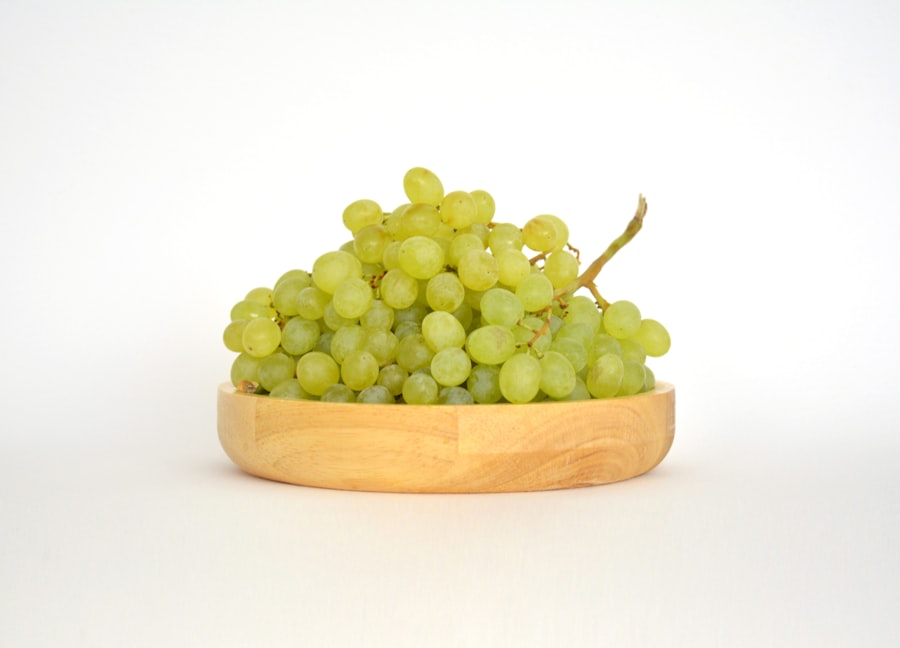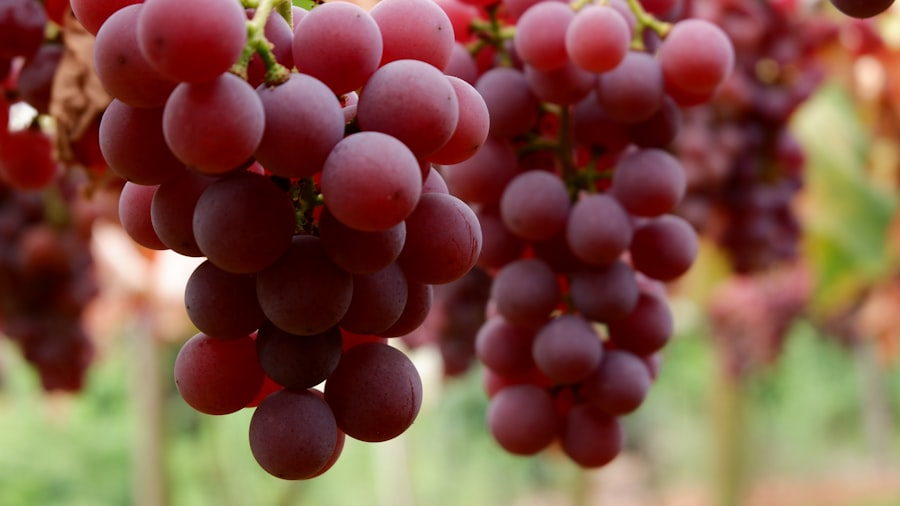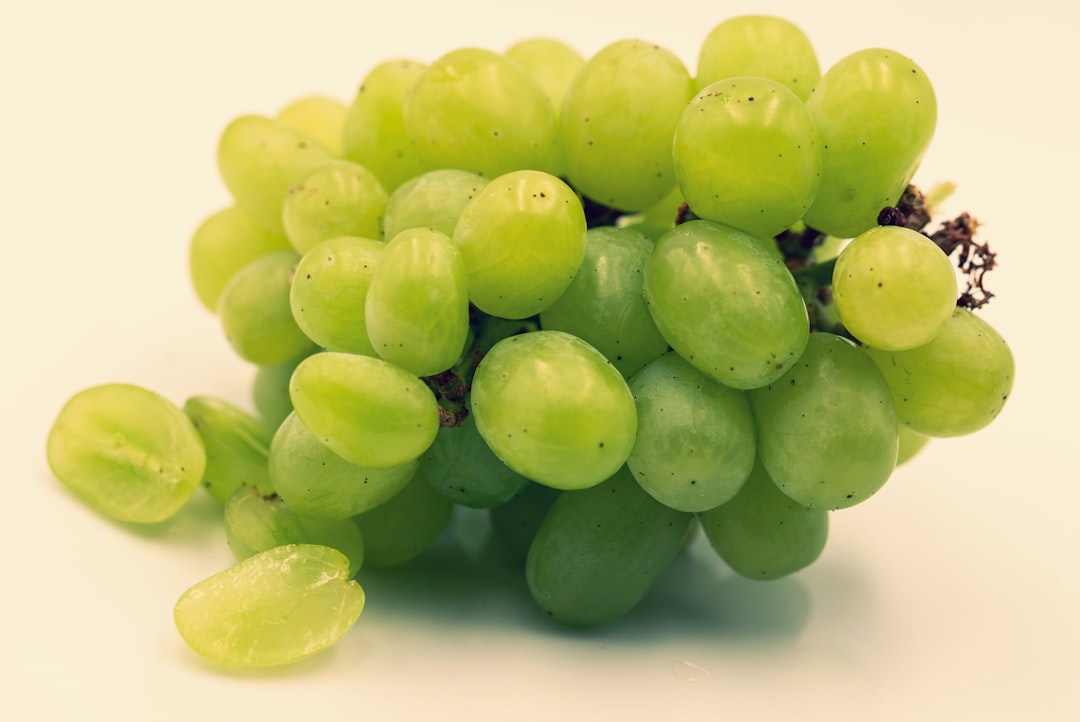The Chilean grape industry has established itself as a significant player in the global market, particularly in the export of table grapes. With its unique geographical advantages, including a diverse climate and fertile soil, Chile has become one of the leading producers of grapes, especially during the Northern Hemisphere’s winter months. This timing allows Chilean grapes to fill a crucial gap in the market when other regions are not producing.
The country’s grape production is concentrated mainly in the central regions, particularly in areas like the Coquimbo and O’Higgins regions, where the climate is ideal for grape cultivation. Chilean grapes are renowned for their quality, flavor, and variety. The industry boasts a wide range of grape types, including popular varieties such as Thompson Seedless, Red Globe, and Autumn Royal.
These grapes are not only enjoyed fresh but are also used in various products, including raisins and wine. The Chilean grape industry has seen significant growth over the years, driven by both domestic consumption and international demand, particularly from markets like the United States, Europe, and Asia. This growth has been supported by advancements in agricultural practices and technology, which have enhanced productivity and quality.
Key Takeaways
- Chile is a major exporter of grapes to the USA, with a well-established harvesting and packing process ensuring quality.
- Efficient transportation and customs clearance are critical for timely delivery and maintaining grape freshness.
- Distribution networks in the USA focus on proper storage and marketing strategies to meet consumer demand.
- The supply chain faces challenges such as environmental impact, sustainability concerns, and quality control.
- Future outlook emphasizes adapting to consumer trends, enhancing sustainability, and overcoming logistical risks.
Harvesting and Packing Processes
The harvesting of grapes in Chile is a meticulous process that requires careful planning and execution to ensure that the fruit is picked at its peak ripeness. Typically, the harvest season begins in late December and can extend into April, depending on the variety and region. Workers are trained to identify the optimal time for harvesting, which is crucial for maintaining the quality of the grapes.
Manual harvesting is common, as it allows for greater care in handling the delicate fruit. Each bunch is carefully cut from the vine and placed into containers designed to minimize bruising. Once harvested, grapes are transported to packing facilities where they undergo a thorough packing process.
This stage is critical as it directly impacts the quality of the grapes upon reaching their destination. The grapes are first sorted to remove any damaged or unripe fruit. After sorting, they are washed and cooled to remove field heat, which helps preserve freshness.
The packing process involves placing the grapes into clamshells or cartons that are designed to protect them during transportation. Each package is labeled with information regarding the variety, origin, and packing date, ensuring traceability and compliance with international standards.
Transportation from Chile to the USA

Transportation plays a vital role in the supply chain of Chilean grapes, as it directly affects their freshness and quality upon arrival in the United States. The journey typically begins with refrigerated trucks transporting the packed grapes from packing facilities to ports. Given that grapes are perishable goods, maintaining a consistent temperature throughout this process is essential to prevent spoilage.
Once at the port, the grapes are loaded onto refrigerated shipping containers that are equipped with temperature control systems to ensure optimal conditions during transit. The maritime journey from Chile to the USA usually takes around two to three weeks, depending on the destination port. Major ports such as Los Angeles and Miami serve as key entry points for Chilean grapes into the U.S.
market. During this time, careful monitoring of temperature and humidity levels within the shipping containers is conducted to maintain quality. Upon arrival at U.S.
ports, the grapes are quickly unloaded and prepared for customs clearance, ensuring that they reach distributors and retailers without unnecessary delays.
Importing and Customs Clearance
| Metric | Description | Typical Value/Range | Unit |
|---|---|---|---|
| Customs Clearance Time | Average time taken to clear goods through customs | 1-5 | Days |
| Import Duty Rate | Percentage of duty charged on imported goods | 0-25 | Percent (%) |
| Customs Brokerage Fee | Fee charged by customs broker for clearance services | 50-300 | Currency Units |
| Inspection Rate | Percentage of shipments selected for physical inspection | 5-20 | Percent (%) |
| Documentation Accuracy Rate | Percentage of shipments with accurate and complete documentation | 90-99 | Percent (%) |
| Import Volume | Total quantity of goods imported in a given period | Varies by industry | Units/Weight |
| Customs Penalty Rate | Percentage of shipments penalized for non-compliance | 1-5 | Percent (%) |
The importing process for Chilean grapes into the United States involves several regulatory requirements that must be met to ensure compliance with U.S. food safety standards. Importers must obtain necessary permits and adhere to guidelines set forth by agencies such as the U.S.
Department of Agriculture (USDA) and the Animal and Plant Health Inspection Service (APHIS). These regulations are designed to prevent pests and diseases from entering the country through imported agricultural products. Customs clearance is a critical step in this process.
Upon arrival at U.S. ports, shipments of Chilean grapes undergo inspections by customs officials who verify documentation and assess compliance with health regulations. This may include checking for pesticide residues and ensuring that packaging meets safety standards.
Once cleared, the grapes can be released for distribution within the U.S., allowing them to reach consumers while still fresh and flavorful.
Distribution and Storage in the USA
After clearing customs, Chilean grapes enter a complex distribution network that ensures they reach retailers and consumers efficiently. Distribution centers play a crucial role in this process, serving as hubs where grapes are received, stored, and redistributed to various locations across the country. These centers are equipped with temperature-controlled storage facilities that help maintain the quality of the grapes until they are ready for shipment to grocery stores and other outlets.
The logistics of distribution require careful planning to optimize routes and minimize transit times.
Additionally, partnerships with retailers are essential for effective marketing strategies that promote Chilean grapes to consumers.
By leveraging promotional campaigns and seasonal marketing efforts, distributors can enhance visibility and drive sales of these sought-after fruits.
Marketing and Sales Strategies

Marketing strategies for Chilean grapes in the U.S. market focus on highlighting their quality, flavor, and health benefits. Promotional campaigns often emphasize their status as a fresh, nutritious snack option that fits well into a healthy lifestyle.
Retailers frequently showcase Chilean grapes through eye-catching displays in stores, often accompanied by sampling events that allow consumers to taste the product before purchasing. Sales strategies also involve collaboration between growers, exporters, and retailers to create attractive pricing models that appeal to consumers while ensuring profitability throughout the supply chain. Seasonal promotions align with peak harvest times in Chile, capitalizing on consumer demand during winter months when domestic grape production is low.
Social media platforms have become increasingly important for marketing efforts as well; engaging content showcasing recipes or health tips featuring Chilean grapes can help build brand loyalty among consumers.
Challenges and Risks in the Supply Chain
Despite its success, the Chilean grape industry faces several challenges and risks within its supply chain that can impact production and distribution. One significant challenge is climate variability; changes in weather patterns can affect grape yields and quality. For instance, excessive rainfall or drought conditions can lead to crop losses or diminished fruit quality, which can have cascading effects on supply levels and pricing.
Additionally, logistical challenges such as port congestion or transportation delays can disrupt timely deliveries to U.S. markets. These disruptions not only affect sales but can also lead to increased costs associated with spoilage or rerouting shipments.
Furthermore, compliance with evolving food safety regulations poses an ongoing challenge for exporters who must stay informed about changing standards in both Chile and the United States.
Sustainability and Environmental Impact
Sustainability has become an increasingly important focus within the Chilean grape industry as consumers become more environmentally conscious.
These practices not only help protect natural resources but also enhance soil health and grape quality over time.
Efforts toward sustainability extend beyond farming practices; transportation methods are also being evaluated for their environmental impact. The industry is exploring more efficient logistics solutions that reduce carbon emissions associated with shipping grapes from Chile to international markets. By prioritizing sustainability initiatives, the Chilean grape industry aims to meet consumer demand for environmentally friendly products while ensuring long-term viability for growers.
Quality Control and Food Safety Measures
Quality control is paramount in maintaining consumer trust in Chilean grapes. The industry employs rigorous quality assurance protocols throughout every stage of production—from cultivation to packing and shipping—to ensure that only the best fruit reaches consumers. Regular inspections are conducted at vineyards to monitor growing conditions and detect any potential issues early on.
Food safety measures are equally critical; compliance with international food safety standards is non-negotiable for exporters seeking access to markets like the United States. This includes adhering to guidelines regarding pesticide use, proper handling during harvesting and packing, and maintaining traceability throughout the supply chain. By prioritizing quality control and food safety measures, the Chilean grape industry reinforces its commitment to delivering safe, high-quality products to consumers.
Consumer Trends and Preferences
Consumer trends indicate a growing preference for fresh produce that is not only healthy but also convenient for busy lifestyles. Grapes fit this profile perfectly; they are easy to snack on and require minimal preparation compared to other fruits. Additionally, there is an increasing interest in organic produce among consumers who prioritize health-conscious choices.
As a result, many growers in Chile have begun offering organic grape varieties to cater to this demand. Moreover, consumers are becoming more aware of where their food comes from; transparency regarding sourcing practices has become a key factor influencing purchasing decisions. As such, marketing efforts highlighting the origin of Chilean grapes—along with information about sustainable farming practices—can resonate strongly with consumers seeking ethically produced products.
Future Outlook for Chilean Grape Supply to the USA
The future outlook for Chilean grape supply to the United States appears promising as demand for fresh produce continues to grow among American consumers. With ongoing investments in agricultural technology and sustainable practices, Chilean growers are well-positioned to enhance productivity while maintaining high-quality standards. Additionally, as climate change impacts global agricultural patterns, Chile’s unique growing season may provide a competitive advantage in supplying fresh grapes during off-peak times for other regions.
However, challenges remain on the horizon; navigating regulatory changes and addressing environmental concerns will be crucial for sustaining growth in this sector. By focusing on innovation within farming practices and logistics while remaining responsive to consumer preferences, the Chilean grape industry can continue to thrive in an increasingly competitive global market. As long as these efforts align with consumer values around health and sustainability, there is every reason to believe that Chilean grapes will remain a staple choice for American consumers well into the future.
The grape supply chain from Chile to the USA is a fascinating topic, highlighting the complexities of international trade and agricultural logistics. For a deeper understanding of the various factors influencing this supply chain, you can read a related article that discusses the challenges and innovations in the industry. Check it out here: Grape Supply Chain Insights.
WATCH THIS! The 100-Year Lie That Built Your Grocery Store — The Hidden Truth About “Fresh” Produce
FAQs
What is the typical route for grape shipments from Chile to the USA?
Grapes from Chile are usually transported by sea or air from major Chilean ports such as San Antonio or Valparaíso to U.S. ports like Los Angeles, Long Beach, or Miami. Air freight is faster but more expensive, while sea freight is more cost-effective for large volumes.
How long does it take for Chilean grapes to reach the USA?
Sea freight shipments typically take about 10 to 20 days depending on the port of entry and shipping schedules. Air freight can deliver grapes within 1 to 3 days, making it suitable for premium or highly perishable varieties.
What are the key steps in the grape supply chain from Chile to the USA?
The supply chain includes grape harvesting, sorting and packing at Chilean facilities, cold storage, transportation to the port, customs clearance, shipping, arrival at U.S. ports, inspection by U.S. authorities, distribution to wholesalers or retailers, and finally sale to consumers.
How is grape quality maintained during transportation?
Grapes are kept in refrigerated containers (cold chain logistics) to maintain optimal temperature and humidity levels. This helps preserve freshness, prevent spoilage, and extend shelf life during transit.
What regulations affect the import of Chilean grapes into the USA?
Imports must comply with U.S. Department of Agriculture (USDA) and Food and Drug Administration (FDA) regulations, including phytosanitary certificates to prevent pests and diseases, pesticide residue limits, and food safety standards.
Are there any seasonal considerations in the Chile to USA grape supply chain?
Yes, Chilean grape exports to the USA typically peak during the Southern Hemisphere summer months (December to March), complementing the off-season for U.S. domestic grape production and ensuring year-round availability.
Who are the main stakeholders involved in the grape supply chain from Chile to the USA?
Stakeholders include grape growers and packers in Chile, freight forwarders, shipping companies, customs brokers, U.S. importers and distributors, retailers, and regulatory agencies.
What challenges are commonly faced in the grape supply chain between Chile and the USA?
Challenges include maintaining cold chain integrity, navigating customs and regulatory requirements, potential delays at ports, weather disruptions, and ensuring timely delivery to preserve grape quality.
